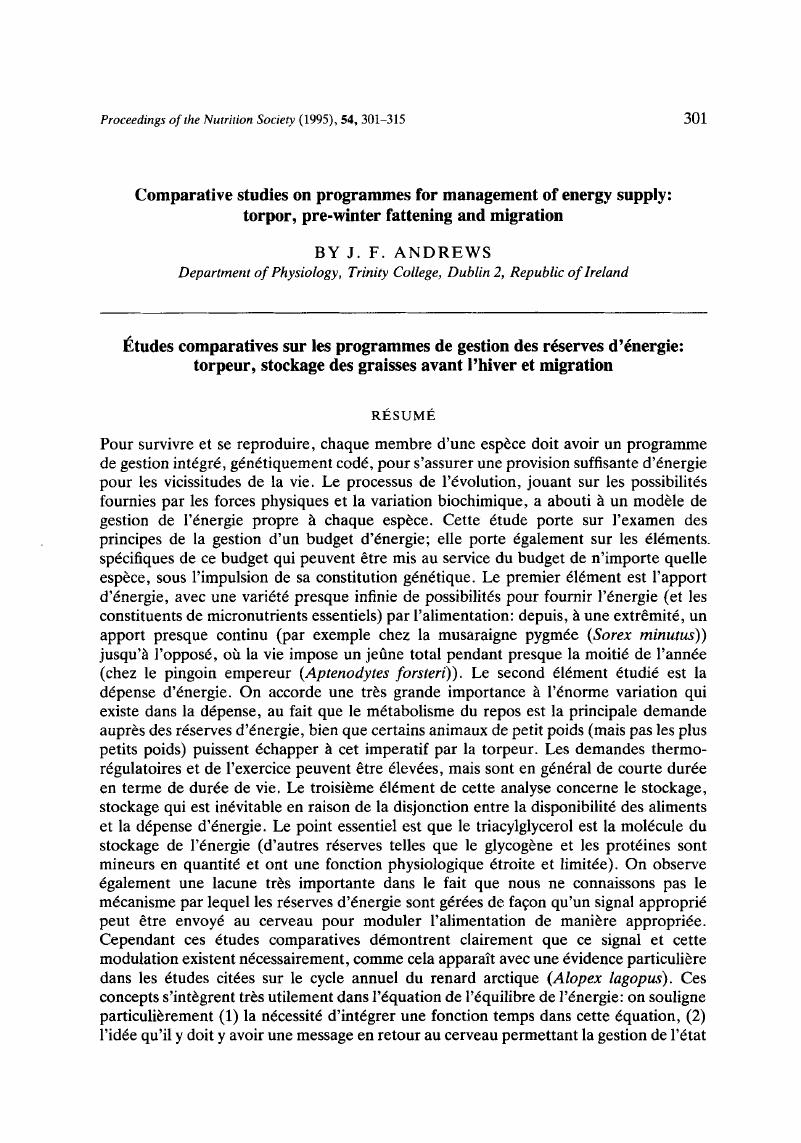Crossref Citations
This article has been cited by the following publications. This list is generated based on data provided by Crossref.
Massemin, Sylvie
and
Handrich, Yves
1997.
Body Composition of the European Barn Owl during the Nonbreeding Period.
The Condor,
Vol. 99,
Issue. 3,
p.
789.
Génin, F
and
Perret, M
2000.
Photoperiod-induced changes in energy balance in gray mouse lemurs.
Physiology & Behavior,
Vol. 71,
Issue. 3-4,
p.
315.
Perret, M.
and
Aujard, F.
2001.
Daily hypothermia and torpor in a tropical primate: synchronization by 24-h light-dark cycle.
American Journal of Physiology-Regulatory, Integrative and Comparative Physiology,
Vol. 281,
Issue. 6,
p.
R1925.
Génin, F
and
Perret, M
2003.
Daily hypothermia in captive grey mouse lemurs (Microcebus murinus): effects of photoperiod and food restriction.
Comparative Biochemistry and Physiology Part B: Biochemistry and Molecular Biology,
Vol. 136,
Issue. 1,
p.
71.
Génin, F.
Nibbelink, M.
Galand, M.
Perret, M.
and
Ambid, L.
2003.
Brown fat and nonshivering thermogenesis in the gray mouse lemur (Microcebus murinus).
American Journal of Physiology-Regulatory, Integrative and Comparative Physiology,
Vol. 284,
Issue. 3,
p.
R811.
Génin, F.
Schilling, A.
and
Perret, M.
2005.
Social inhibition of seasonal fattening in wild and captive gray mouse lemurs.
Physiology & Behavior,
Vol. 86,
Issue. 1-2,
p.
185.
S�guy, M.
and
Perret, M.
2005.
Factors affecting the daily rhythm of body temperature of captive mouse lemurs (Microcebus murinus).
Journal of Comparative Physiology B,
Vol. 175,
Issue. 2,
p.
107.
Jones, Stephany
Pfister-Genskow, Martha
Cirelli, Chiara
and
Benca, Ruth M.
2008.
Changes in brain gene expression during migration in the white-crowned sparrow.
Brain Research Bulletin,
Vol. 76,
Issue. 5,
p.
536.
Génin, Fabien
2008.
Life in Unpredictable Environments: First Investigation of the Natural History of Microcebus griseorufus.
International Journal of Primatology,
Vol. 29,
Issue. 2,
p.
303.
Mata, Astolfo
Massemin-Challet, Sylvie
Caloin, Michel
Michard-Picamelot, Delphine
and
Le Maho, Yvon
2010.
Seasonal variation in energy expenditure and body composition in captive White Storks (Ciconia ciconia).
Comparative Biochemistry and Physiology Part A: Molecular & Integrative Physiology,
Vol. 155,
Issue. 1,
p.
19.
Guan, Xiao-Ming
Metzger, Joseph M.
Yang, Liming
Raustad, Kate A.
Wang, Sheng-Ping
Spann, Stephanie K.
Kosinski, Jennifer A.
Yu, Hong
Shearman, Lauren P.
Faidley, Terry D.
Palyha, Oksana
Kan, Yanqing
Kelly, Theresa M.
Sebhat, Iyassu
Lin, Linus S.
Dragovic, Jasminka
Lyons, Kathy A.
Craw, Stephanie
Nargund, Ravi P.
Marsh, Donald J.
Strack, Alison M.
and
Reitman, Marc L.
2011.
Antiobesity Effect of MK-5046, a Novel Bombesin Receptor Subtype-3 Agonist.
Journal of Pharmacology and Experimental Therapeutics,
Vol. 336,
Issue. 2,
p.
356.
Zhang, Jing
Tessier, Shannon N.
Biggar, Kyle K.
Wu, Cheng-Wei
Pifferi, Fabien
Perret, Martine
and
Storey, Kenneth B.
2015.
Regulation of Torpor in the Gray Mouse Lemur: Transcriptional and Translational Controls and Role of AMPK Signaling.
Genomics, Proteomics & Bioinformatics,
Vol. 13,
Issue. 2,
p.
103.



